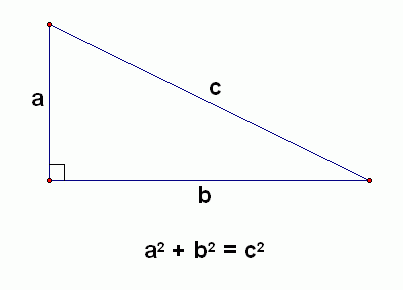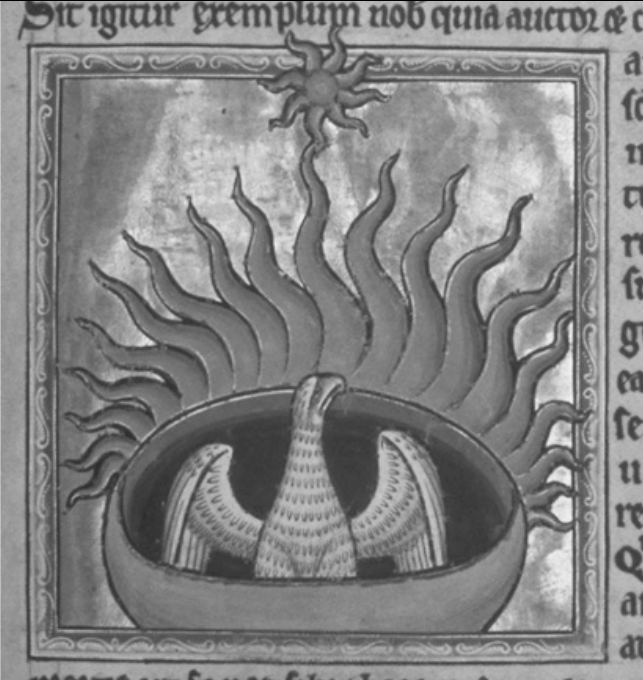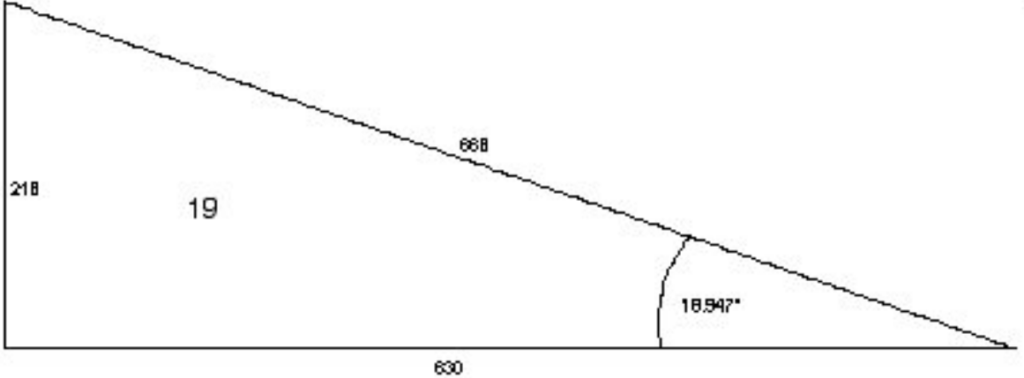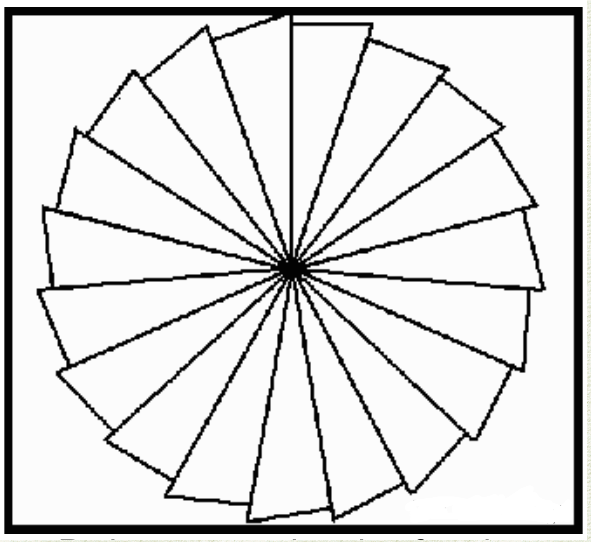In this article I intend to explore the relationship between Pythagoras and his 216 year rebirth period, the myth of the Phoenix and the Metonic cycle on which the Druidcraft calendar is based.
Most of us know Pythagoras today for his mathematical theorem; That the square area of the hypotenuse of a right angle triangle is the sum of the square of the other two sides. Or, a2 + b2 = c2. I began to discuss the importance of the right angle triangle in the building of Stonehenge in a previous article. A right angle triangle is also known as a Pythagorean triangle, and will will come back to them later.

We do not have much in the way of direct evidence for Pythagoras. What we know of him comes down to us secondhand from the many important philosophers, astronomers and mathematicians who followed and were influenced by him. Not least of whom were Plato and Aristotle, and through them the whole of western philosophy.

Pythagoras was born on the Island of Samos in 570BC. At around age 40 he left the Island and travelled extensively through Egypt and Babylonia before settling in Croton in southern Italy where he established the first Pythagorean community. At this time the Babylonians had known of the Metonic sequence for several centuries, but it would still be almost another hundred years before Meton of Athens was to record it. Given that Pythagoras was a mathematician and astronomer, I feel it is very likely he could have had knowledge of the Metonic sequence from the Babylonians.
There are many philosophers who wrote about Pythagoras. In Iamblichus’ Vita Pythagorica, we are told of an incident in which Pythagoras, and his friend and fellow philosopher Abaris the Hyperboran urge the Sicilian tyrant Philaris towards virtue. It is in Abaris and the philosophy taught by Pythagoras that many people see hints of the Druids. Abaris was said to be a prophet, sage, healer and priest of Apollo who travelled around the world with an arrow. He learned his skills in his homeland of Hyperboria before fleeing a plague.
We are also told by Diodorus Siculus (quoting an earlier source) that:
Of those who have written about the ancient myths, Hecateus and certain others say that in the regions beyond the land of the Celts there lies in the ocean an island no smaller than Sicily. This island, the account continues, is situated in the north and is inhabited by the Hyperboreans, who are called by that name because their home is beyond the point whence the north wind (Boreas) blows; and the island is both fertile and productive of every crop, and since it has an unusually temperate climate it produces two harvests each year. Moreover, the following legend is told concerning it: Leto was born on this island, and for that reason Apollo is honoured among them above all other gods; and the inhabitants are looked upon as priests of Apollo, after a manner, since daily they praise this god continuously in song and honour him exceedingly. And there is also on the island both a magnificent sacred precinct of Apollo and a notable temple which is adorned with many votive offerings and is spherical in shape. Furthermore, a city is there which is sacred to this god, and the majority of its inhabitants are players on the cithara; and these continually play on this instrument in the temple and sing hymns of praise to the god, glorifying his deeds. The Hyperboreans also have a language, we are informed, which is particular to them, and are most friendly disposed towards the Greeks, and especially towards the Athenians and the Delians, who have inherited this good-will from most ancient times. The myth also relates that certain Greeks visited the Hyperboreans and left behind them there costly votive offerings bearing inscriptions in Greek letters. And in the same way Abaris, a Hyperborean, came to Greece in ancient times and renewed the goodwill and kinship of his people to the Delians. They say also that the moon, as viewed from this island, appears to be but a little distance from the earth and to have upon it prominences, like those of the earth, which are visible to the naked eye. The account is also given that the god visits the island every nineteen years, the period in which the return of the stars to the same place in the heavens is accomplished; and for this reason the nineteen-year period is called by the Greeks the “year of Meton”.
Diodorus Siculus – Histories II.47. Oldfather, vol 2, 37-41
Hyperboria has been associated with Great Britain many times due to it’s location, climate and size. The spherical temple is often taken to be a reference to Stonehenge which of course tracks the 19 Metonic cycle using the Aubery holes. Could it be then that Abaris was an early British Druid or proto-druid with knowledge of the Metonic sequence? It is worth pointing out that the Hecateus who is being quoted here lived before Meton of Athens discovered the cycle. So calling it the “year of Meton” must be an elaboration by Diodorus.
There is more. Pythagoras alone in the ancient Greek world taught the concept of reincarnation, or transmigration of the soul. Something that Cesar later observed regarding the Druids:
With regard to their actual course of studies, the main object of all education is, in their opinion, to imbue their scholars with a firm belief in the indestructibility of the human soul, which, according to their belief, merely passes at death from one tenement to another.
Julius Caesar, De Bello Gallico, VI, 14
Diodorus Siculus went so far as to say the Druids “followed the Pythagorean doctrine”. According to Nicomachos, Pythagoras believed in a cycle of reincarnation every 216 years. But why 216? In of it’s self 216 is a very interesting number.
216 is the smallest untouchable number which is also a cube
- Known as Plato’s number: Plato alludes to the fact that 216 is equal to 63, where 6 is one of the numbers representing marriage since it is the product of the female 2 and the male 3. Plato was also aware of the fact the the sum of the cubes of the 3-4-5 Pythagorean triple is equal to 216
- Two hundred sixteen 216 = 23*33 = 63 = 33 + 43 + 53, making it the smallest cube that’s also the sum of three cubes
- 216 is the smallest magic product of a 3 by 3 multiplicative magic square
- 216 is the smallest abundant cube
- 216 is the smallest cube that is also a sum of several consecutive cubes: 216 = 27+64+125
Plato also believed that 216 years was the period after which everything, including political structures, would decay. In this period, aristocracy, democracy, oligarchy and tyranny would arise. Or, as Hesiod put it, the golden, silver, bronze and iron generations. What is most interesting to us here though is the relationship between the number 216 and the Metonic cycle.
The defining characteristic of the Metonic cycle, is the fact that after 19 years, the sun and the moon will return to the same position in the sky. So if you see a full moon on the winter solstice, 20 years later you will also see a full moon on the winter solstice. But the cycle is not perfect, and there is a discrepancy of 2 hours, 6 minuets and 41 seconds. After around 11.36 Metonic cycles, this discrepancy accumulates enough that the moon will be one day ahead of where it would be expected. 11.36 Metonic cycles = 215.958 years. Almost exactly 216 years. It could well be then that Pythagorean period of rebirth is actually encoded knowledge of the Metonic cycle.
There are a couple of issues here though. First, 216 can’t be divided by 19 (a Metonic cycle) so the error occurs midway through a cycle. It could be possible to end the cycle early and look for a nearby year to start a new one, but the ancients did not seem to do this after only a couple of centuries. Nor can you correct for this error by simply including a leap day so the sun could catch up with the moon, because then you would be out of step with the seasons. Despite not being corrected for after 216 years, the error would have to be dealt with eventually. So then next logical thing to do would be to look for a period of time where it would become intolerable, causing religious confusion and strife and so would have to be corrected for.
A good opportunity to correct the issue presents it’s self after only three 216 year periods, or 648 years. If at the end of this three periods, a single Metonic cycle is deducted, reducing it to 630 years, a new cycle can begin where the sun and the moon are in complete alignment. For example, A new moon occurs on the spring equinox of the years 1385, 2015 and 2645 AD. So if every 630 years the current cycle is scrapped and a new one begun, then each 630 year period can begin with the same phase of the moon on the same day of the year.
Of coarse there is a famous myth about rebirth. No, I am not talking about Jesus, I am talking about the story of the Phoenix. Lets start by looking at the available accounts of the Phoenix myth

Notice the 19 flames embedding the secret knowledge associating the Phoenix with the 19 years of the Metonic cycle
There is a bird in India, called the Phoenix.
Physiologus
After five hundred years it flies into the forests of Lebanon and fills its wings with aromatic essences and shows itself to the priest of Heliopolis (the sun city of Egypt) in the first of month, in Nisan or Adar (in Babylonian-Jewish calendar: mid-March until mid-April), that is in Phamenoth or Pharmuti. The priest, to whom it had shown itself, comes and fills the altar with the wood of wine trees.
The bird flies to Heliopolis loaded with aromatic essences and steps on the altar and lights for itself the fire and burns itself.
On the following day, when the priest searches the altar, he finds a worm in the ashes.
On second day he finds it as a little chicken of a bird, and on third day he finds a grown up bird, and this one takes its leave and goes back to his home again.
There is another sacred bird, called Phoenix.
Herodotus, Historiae 2,73.
I have not seen it by myself, only an image of it, and it only visits rarely, as the people of Sun city Heliopolis say, only every five hundred years.
It comes only when, as one says, when his father has died.
Hee (Manilius) reporteth, that never man was knowne to see him feeding: that in Arabia hee is held a sacred bird, dedicated unto the Sunne: that hee liveth 660 yeares: and when hee groweth old, and begins to decay, he builds himselfe a nest with the twigs and branches of the Canell or Cinamon, and Frankincense trees: and when he hath filled it with all sort of sweet Aromaticall spices, yeeldeth up his life thereupon. He saith moreover, that of his bones & marrow there breedeth at first as it were a little worme: which afterwards prooveth to bee a pretie bird. And the first thing that this yong new Phœnix doth, is to performe the obsequies of the former Phœnix late deceased: to translate and carie away his whole nest into the citie of the Sunne neere Panchæa, and to bestow it full devoutly there upon the altar. The same Manilius affirmeth, that the revolution of the great yeare so much spoken of, agreeth just with the life of this bird: in which yeare the starres returne againe to their first points, and give signification of times and seasons, as at the beginning: and withall, that this yeare should begin at high noone, that very day when the Sunne entreth the signe Aries.
Plinius Elder, Historia naturalis 10,2,3-5
That it is a creature sacred to the sun, differing from all other birds in its beak and in the tints of its plumage, is held unanimously by those who have described its nature.
Tacitus, Annales 6,28
As to the number of years it lives, there are various accounts. The general tradition says five hundred years. Some maintain that it is seen at intervals of fourteen hundred and sixty-one years, and that the former birds flew into the city called
Heliopolis successively in the reigns of Sesostris, Amasis, and Ptolemy, the third king of the Macedonian dynasty, with a multitude of companion birds marvelling at the novelty of the appearance.
There is a bird that creates and regenerates itself.
Ovide: Metamorphôseôn liber XV, 395-405
The Assyrians call it Phoenix. It does not live of fruits
And herbs, but of the drops of incense and the juice of amomum.
If five hundred years of his life al full,
He builds a nest with his talons and his clean gob
In the branches of a oak or the top of a palm tree.
He has Cassia there and the ears of supple grain,
Also yellow myrrh and ground cinnamon,
He lays down there and lives his life in this scent.
Here, people say,out of the body of the father is growing
A little Phoenix, that is determined to live also as long.
If he is strong enough, he breaks away the nest off the branches of a large tree
And carries it through the air to the city of Hyperion and lays
It down on the sacred door of the temple.
From these accounts we learn that the Phoenix appears at the new moon of the spring equinox. Most accounts agree that the Phoenix returns every 500 years, but the fact that Pliny gives us 660 years and Tacitus 1461 years both hint that the Phoenix cult is calendrical in nature.
Lets deal with the 1461 year statement first. The Egyptian calendar was 365 days long and did not account for the additional 0.25 of a day that the Julian calendar did (+1 day every 4 years – a leap year). This meant that the date slipped back one day every 4 years. After 1461 Egyptian years the two calendars would once again agree.
To explain the number 660, I suggest this is the approximate length of time that a Decan calendar remains valid before the effect of axial precession render it useless. Allow me to elaborate.
The Babylonians were the first to divide the sky, specifically the ecliptic, into 360o. Then further divide the ecliptic into 12 30o segments we today know as the zodiac. Each 30o zodiac sign is then divided into three 10o “Decans”.
A Decan calendar works by observing the stars on the eastern horizon just before dawn. Each day the stars will rise a few moments more before the sun, until after approximately 10 days the stars of the next Decan are visible just before dawn. In this way the time of night could also be told. A calendar that were to base it’s self on the rising of stars would be subject to the effect of procession, just as the tropical zodiac is today 23o out of step with the sky. Every 666 years a Decan calendar would have to be scrapped and a new one drawn up advancing each Decan by 10 days. Furthermore, if a Metonic period is the time it takes the sun and the moon to “return to the same position in the sky” i.e. in relation to the stars, then after 666 years a new Metonic calendar would also have to be considers.
What we are left with then is four important numbers and a Phoenix myth that together encode the cyclic knowledge of correcting the Metonic sequence.
The Metonic myth of the Phoenix the is this; When the priests of Heliopolis (city of the sun) found a new moon occurring on the spring equinox after 630 (3 x 216 -19) years since the last, they would anticipate the coming of the Phoenix on the final day of the waning moon to end the current Metonic cycle early. This is the day that the Phoenix arrives before burning it’s self (and the current cycle) at the alter (the sun). This is the first of the 3 accumulated days after each 216 year period. There then follows a day of rest when the Phoenix is growing (the actual moon conjunction with the sun), followed by the resurrection of the Phoenix on the third day with the sighting of the first sliver of the new moon. The Phoenix leaves Heliopolis and the cycle begins again, now with the moon and sun once again in sync with the calendar, and re-set against the stars to deal with the 666 year procession limit.
Now, if we take these 4 important numbers, 19, 216, 630 and 666 we can discover that 216, 630 and 666 form a perfect Pythagorean triangle, neatly encoding the number of years after which a Metonic calendar must be considered for correction

But what about the number 19? That angle of 18.947o times by 19 years gives us a value of 359.993o, or rounded up by 0.007 (7 hundredths of a degree) it gives us a full circle of 360o, perfectly expressing the cyclical nature of the entire Metonic sequence and it’s corrections to make a working repeatable 630 year calendar.

What better way to encode the knowledge of the Metonic sequence, the Pythagorean rebirth period and the myth of the rebirth of the Phoenix, than as a set of Pythagorean triangles!?
Leave a Reply
You must be logged in to post a comment.